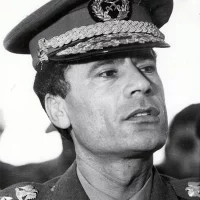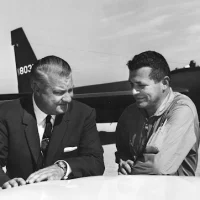In April and May of 1958, Indonesia went through a period of rebellion, as discontent on the peripheral islands, like Sumatra, grew because of lack of support and autonomy from the central government, which is located on the island of Java. Although Sukarno’s government was not communist, it did allow the communists to participate politically.… Read More "The Year of Living Dangerously – Indonesia and the Downed CIA Pilot, May 1958"
Apocalypse Not, Part II
On April 29, 1975, Francis Terry McNamara, then Consul General, finally received orders to evacuate the Consulate General in Can Tho, Vietnam. By that time, the U.S. had resigned itself to the fall of Saigon and McNamara and others had been evacuating the most vulnerable Vietnamese staff. McNamara had also been preparing for a water-borne… Read More "Apocalypse Not, Part II"
Apocalypse Not – The Evacuation from Can Tho, Vietnam — April 1975
The shaky peace that had held in Vietnam since the signing of the Paris Peace Accords in 1973 began to crumble in late 1974 after North Vietnam began a series of military offensives which pushed the South Vietnamese army back on its heels. By early 1975 it had become painfully apparent that there would not… Read More "Apocalypse Not – The Evacuation from Can Tho, Vietnam — April 1975"
The Fall of South Korean Strongman Syngman Rhee — April 26,1960
Syngman Rhee, a staunch anticommunist and authoritarian, was the first president of South Korea. Backed by the United States, Rhee was appointed head of the Korean government in 1945 before winning the country’s first presidential election in 1950. He led South Korea through the Korean War, but because of widespread discontent with corruption and political… Read More "The Fall of South Korean Strongman Syngman Rhee — April 26,1960"
The late 1980s saw an alarming decline in U.S.-Libyan relations. A plane hijacking and airport attacks in Rome and Vienna in 1985, all linked to Libyan leader Muammar Qaddafi further escalated tensions between the two countries. The U.S. discovered that surface-to-air missiles were being deployed in Libya around the same time. In contravention of international… Read More "Crossing Qaddafi’s Line of Death – April 15, 1986"
On May 1, 1960, an American U-2 spy plane was shot down over the Soviet Union and its pilot, Francis Gary Powers, was captured. The Eisenhower administration initially attempted to cover up the incident but was soon forced to admit that the U.S. had been conducting reconnaissance flights over the Soviet Union for several years.… Read More "The Show Trial of U-2 Pilot Francis Gary Powers"
The Jonestown Massacre
Jonestown, Guyana was the scene of one of the most harrowing tragedies in American history. On November 18, 1978, at the direction of charismatic cult leader Jim Jones, 909 members of the People’s Temple died, all but two from apparent cyanide poisoning, in a “revolutionary suicide.” They included over 200 murdered children. The poisonings in… Read More "The Jonestown Massacre"
The Iran Hostage Crisis — Part I
November 4, 1979 – Radical Iranian students take over the U.S. embassy in Tehran and hold 52 Americans hostage. The embassy had been seized in February of that year, shortly after the Ayatollah Khomeini returned from exile in Paris, but that was resolved quickly; few suspected that this diplomatic crisis would end up lasting 444… Read More "The Iran Hostage Crisis — Part I"
Captive in the Congo
Michael Hoyt was Commercial Officer in Leopoldville from 1962 until 1965 and was serving as interim Principal Officer in Stanleyville (now Kisangani) when he and his staff, along with 320 other people, were taken hostage by the rebel Simbas. Held for 111 days, they were eventually rescued in a joint U.S.-Belgian operation code-named Dragon Rouge on November… Read More "Captive in the Congo"


